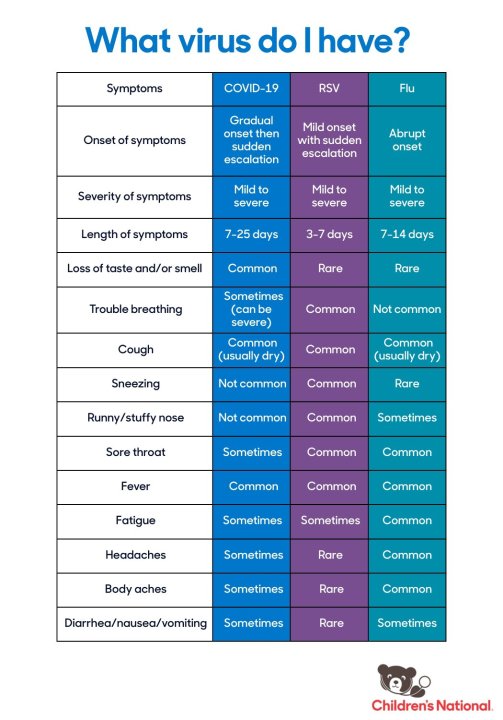COVID, RSV or flu? How to tell the symptoms apart
(NEXSTAR) – Three respiratory illnesses, COVID-19, respiratory syncytial virus (RSV) and the flu, continue to infect hundreds of thousands of Americans daily – which can make it hard to tell what’s wrong when you feel a cough kicking in.
All three viruses cause sickness with overlapping symptoms. A chart created by Children’s National Hospital in Washington, D.C. compares the most common differences at a glance.
While cough and fever are common with all three, there are other ways the viruses differ. Sneezing is common with RSV, happens sometimes with COVID-19 and is rare with the flu, according to the hospital’s symptom chart. On the other hand, headaches and body aches are rare with RSV, happen sometimes with COVID-19 and are common with the flu.
Another thing to pay attention to is the “onset of symptoms,” Children’s National says. While COVID-19 and RSV both start gradual then escalate, the flu usually hits hard and fast.
With RSV, symptoms often go away in about a week, according to the Centers for Disease Control and Prevention. Symptoms persist longer with the flu, about one to two weeks, and can last even longer with COVID-19.

The severity of symptoms in all three cases varies from person to person.
Another key difference: There are vaccines for flu and COVID-19, but no vaccine for RSV – though researchers are working on one.
While examining your symptoms is a good place to start, doctors recommend getting tested to help inform next steps.
“For both flu and for COVID, we have antivirals that work if taken early after signs of symptoms,” said Dr. Andrew Pekosz, a virologist and professor at Johns Hopkins Bloomberg School of Public Health. “So particularly if you’re in a high-risk group, it’s good to know that. … Those are important tools that we really have to keep using.”
Copyright 2024 Nexstar Media Inc. All rights reserved. This material may not be published, broadcast, rewritten, or redistributed..













